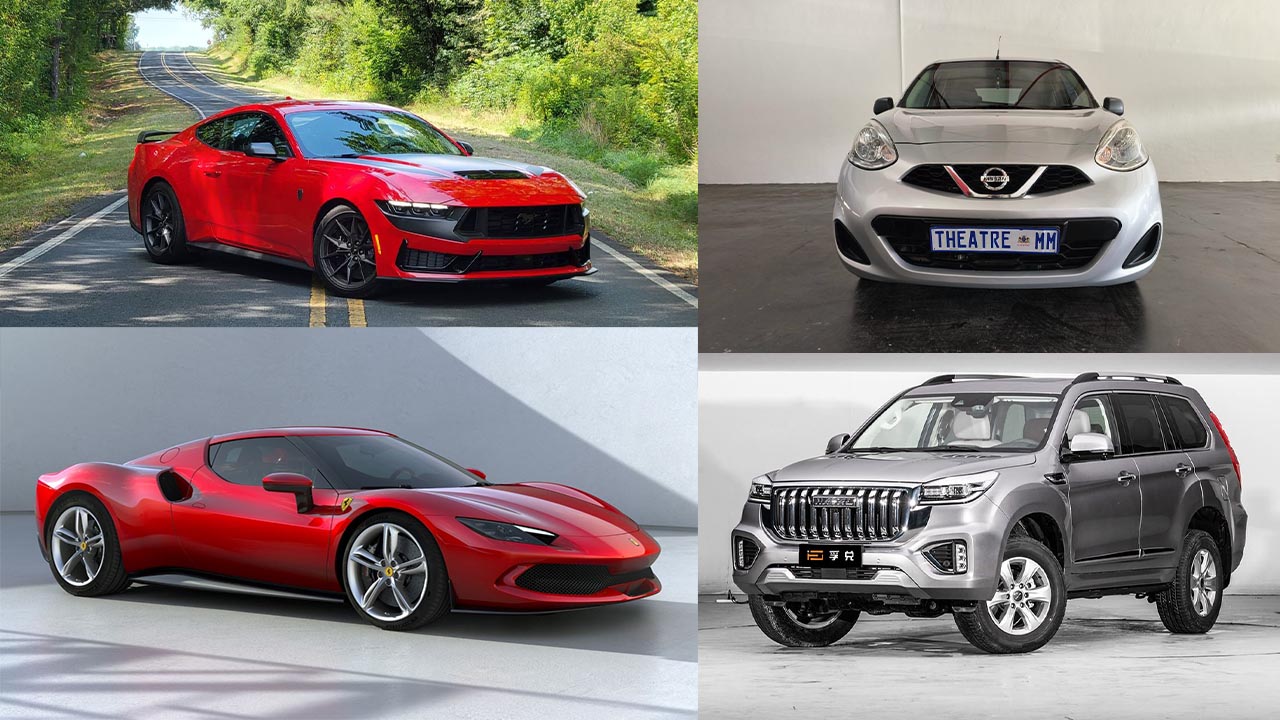Among high-performance vehicles, while rapid acceleration offers an exhilarating driving experience, the capability to stop quickly and safely holds just as much importance.
The comprehensive braking tests have identified the top cars that set new standards in braking performance, showcasing advanced technology, precise engineering, and outstanding stopping distances.
When speed meets control, braking becomes the true test of performance. It’s easy to get caught up in horsepower and acceleration times, but a car’s ability to come to a swift, stable stop is just as critical—especially when safety and precision matter most.
Whether you’re tearing down a track or navigating unpredictable streets, excellent braking can make all the difference.
Cars With Excellent Braking
In this article, we’re spotlighting five cars that don’t just go fast—they stop fast, too. These machines combine cutting-edge brake technology with engineering finesse to deliver confidence-inspiring stopping power.
1. 2019 Chevrolet Corvette ZR1
The 2019 Chevrolet Corvette ZR1 stands out as one of the most powerful front-engine Corvettes ever produced, with its stopping capabilities being just as remarkable as its acceleration.
Featuring the ZTK Track Performance package, the ZR1 boasts a stiffer suspension setup, a flat undercarriage that enhances aerodynamics, and Pilot Sport Cup 2 ZP tires engineered for exceptional grip.
Powered by a 6.2-liter supercharged V-8 engine generating an impressive 755 horsepower, the ZR1 accelerates with incredible speed.
Yet, it is the Brembo carbon-ceramic brakes that provide extraordinary stopping power, bringing the vehicle to a complete stop from 97 kilometers per hour in only 26.8 meters.
This outstanding braking performance is attributed to the car’s optimal weight distribution and sophisticated braking system, offering superior control even at high speeds.
I’ve logged a solid amount of track time in the already outrageous 650-horsepower Corvette Z06—enough to know with a fair level of confidence that whatever the 2018 Corvette ZR1 was capable of doing at Road Atlanta, my own driving skills wouldn’t be able to keep pace.
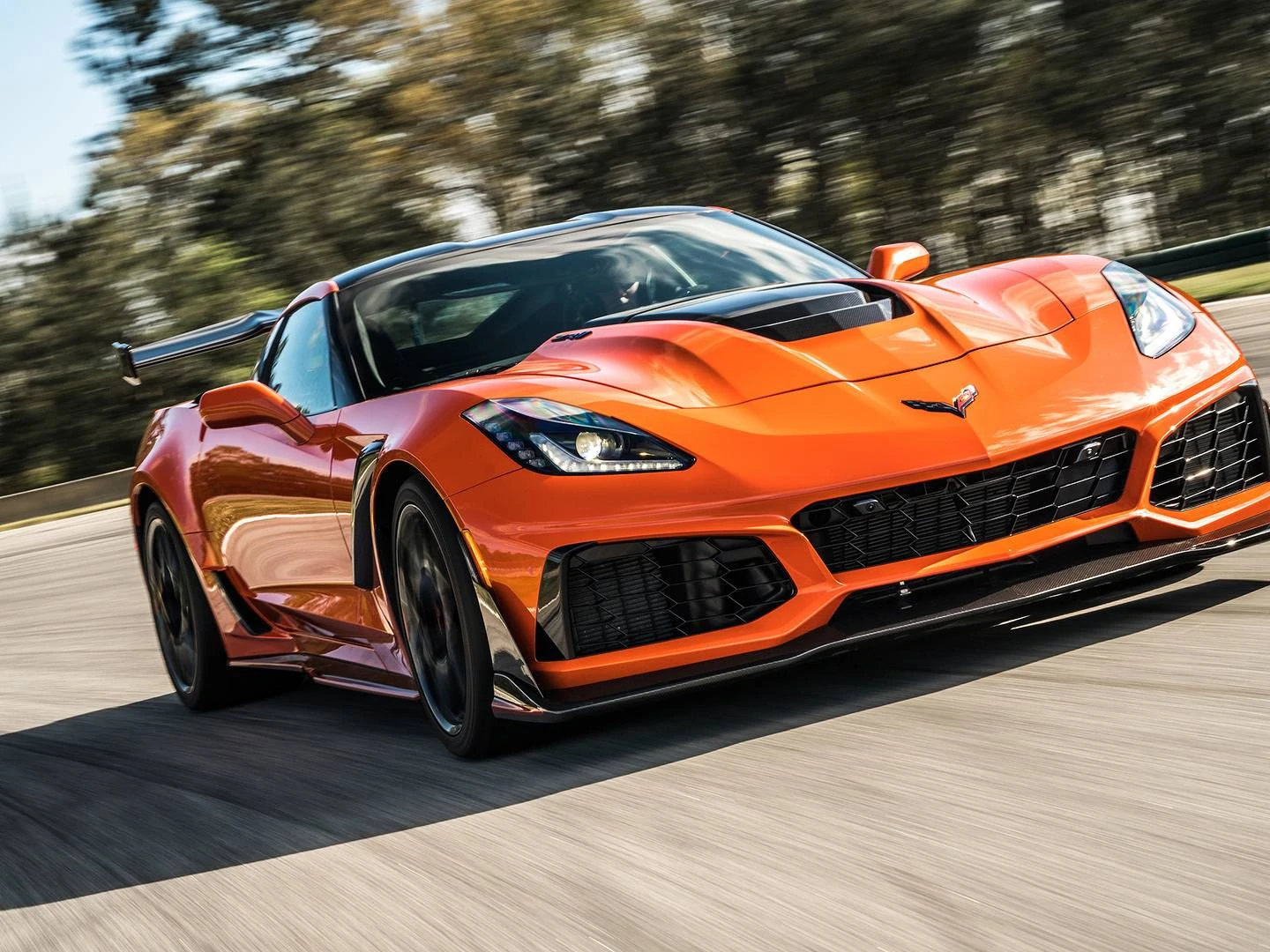
Corvette figures have a habit of being outrageous, and this one was no exception: seven hundred fifty-five horsepower, seven hundred fifteen pound-feet of torque, a top speed of two hundred fourteen miles per hour, and an aero package that came dangerously close to GT3 territory—all starting at $120,000.
What I didn’t anticipate was just how right I’d be about my limitations, or how completely the 2019 Corvette ZR1 would recalibrate my understanding of what speed actually feels like.
This is the fastest, most powerful, and—undeniably—the loudest Corvette ever made. It’s an unapologetic response to the backlash sparked by owners and auto journalists alike when the Z06, billed as a “trackday special,” consistently overheated during hot laps.
The issue? A small, overworked, and undercooled 1.74-liter Eaton supercharger that simply couldn’t handle the temperature. Corvette’s famously low cowl height, typically a major advantage, clashed hard with the spatial demands of forced induction.
Anyone who’s attempted forced induction on a Corvette will tell you: fitting a larger radiator, intercooler, airbox, supercharger, and all the accompanying plumbing under that sleek hood is a nightmare. The airflow just isn’t sufficient to keep temps in check.
This problem initially gave rise to the glorious Grand Sport—still one of the best-driving Corvettes out there.
It married the naturally aspirated LT1 engine from the base model with the Z06’s aggressive bodywork and upgraded chassis, delivering a wonderfully balanced, entertaining, and agile car for both road and track.
At the same time, several tuners—most notably Callaway Cars—developed new supercharger setups using Eaton’s larger 2.3-liter unit.
With less stress placed on it compared to the factory setup, it could produce a terrifying 775 horsepower with far fewer cooling issues. I experienced this firsthand in their Aerowagen test car—easily the most unhinged and outrageous sports car I’ve driven in the past year.
Also Read: 10 Best V6 Sports Cars That Don’t Sacrifice Reliability
2. 2023 Ferrari 296 GTB
The 2023 Ferrari 296 GTB blends timeless Italian style with innovative hybrid technology. Equipped with a 3.0-liter V-6 plug-in hybrid engine that produces 818 horsepower, this Ferrari delivers not only impressive power but also exceptional precision and control.
Its state-of-the-art brake-by-wire system provides more precise braking modulation, although it may take some time to adjust to due to the slightly wooden feel of the pedal.
With the ability to stop from 97 kilometers per hour in just 26.8 meters, the 296 GTB matches the Corvette ZR1’s braking performance.
However, it achieves this with a more sophisticated hybrid configuration, showcasing Ferrari’s expertise in striking the perfect balance between power and weight.
The car’s lightweight construction, paired with finely tuned aerodynamics, ensures maximum stability during intense braking, making the 296 GTB a true masterpiece of engineering.
Ferrari has long been synonymous with mechanical excellence, renowned for its iconic 12-cylinder engines crafted with passion and precision. The 296GTB coupe and 296GTS convertible serve as a bridge between Ferrari’s storied past and its hybrid-powered future.
Instead of a V-12—or even a V-8—these models feature a hybrid system centered around a turbocharged V-6, a move that’s sure to unsettle some purists. But before they get too upset, it’s worth remembering that Ferrari’s Formula 1 cars also rely on a V-6 layout—and the 296 delivers a staggering 819 horsepower.
That immense power goes solely to the rear wheels, which might sound like a recipe for chaos, but smart engineering ensures the car remains not just controllable, but surprisingly approachable.
More importantly, none of that technology dulls the 296’s fundamental purpose: to deliver an engaging, visceral driving experience. Any fears that Ferrari would lose its soul in the shift toward electrification are put to rest here.
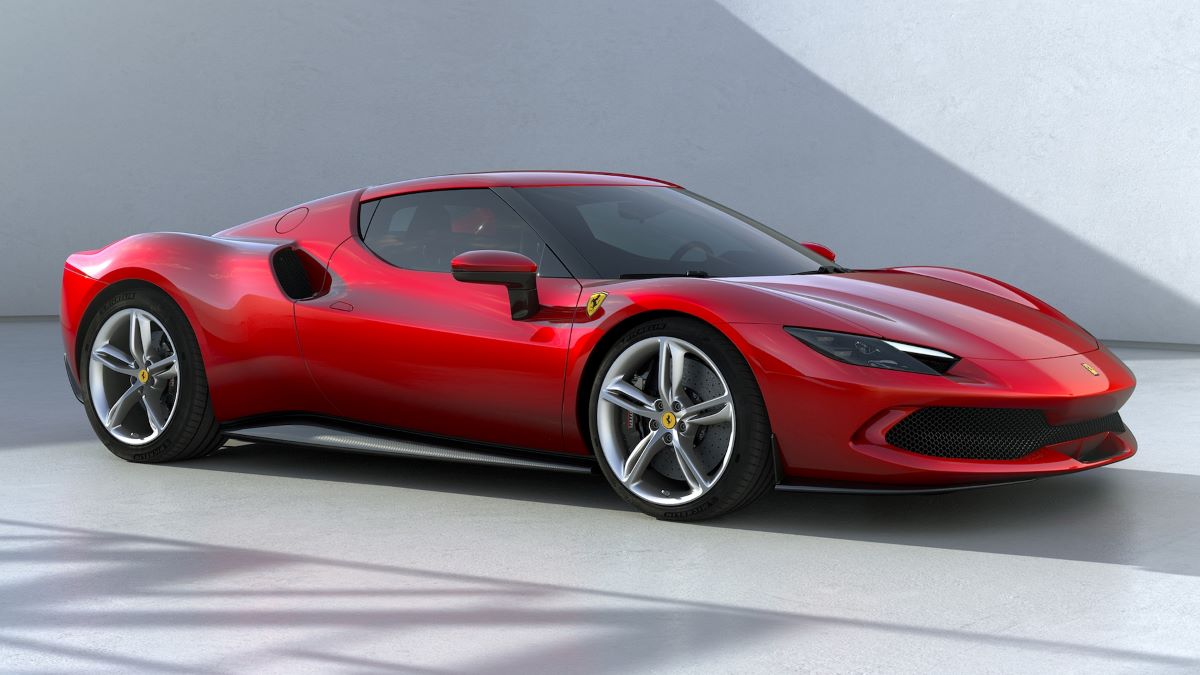
Better still, all of that cutting-edge hardware is housed in a design that looks unmistakably Ferrari, inside and out. Make no mistake—this high-tech hybrid 296 is absolutely a Ferrari worth desiring.
The 2025 Ferrari 296GTB and 296GTS return unchanged, with no notable updates for the new model year.
The 2025 Ferrari 296 lineup starts at $346,950 and stretches up to $379,950 depending on trim and options.
Let’s be honest: with prices like these, the 296 is out of reach for most buyers. But if we were in a position to choose, we’d go for the coupe and opt for the carbon-fiber wheels and the carbon-fiber Daytona seats.
The money saved by skipping the convertible could then be redirected toward track days and road trips—exactly the kind of experiences this car was built for. Mounted behind the driver, the 296’s powertrain pairs a turbocharged V-6 with a plug-in hybrid system.
Combined, they generate an astonishing 819 horsepower, sent exclusively to the rear wheels via an eight-speed dual-clutch automatic transmission. The 6.0-kWh battery pack beneath the floor allows for short stints of electric-only driving.
The redline sits at a screaming 8500 rpm, delivering the kind of thrilling, high-revving performance Ferrari is known for. During our first drive of the 296GTB coupe, the sensory experience was intense.
Take the roof off in the 296GTS, and that sensation only amplifies, with the wind rushing through at triple-digit speeds. Acceleration is breathtaking, and the car invites you to explore the upper edge of its performance limits with confidence.
Four drive modes—eDrive, Hybrid, Performance, and Qualify—provide increasing levels of aggression and response, while the steering is sharp and communicative thanks to electrically assisted power, and the braking is handled by a brake-by-wire system.
If you’re chasing weight savings and don’t mind the extra cost, carbon-fiber wheels are available to replace the standard twin-spoke forged units.
3. 2016 Dodge Viper ACR (Street Setup)
The 2016 Dodge Viper ACR is renowned for its exceptional track performance, and its street configuration offers equally impressive braking capabilities.
Featuring the same robust carbon Brembo brakes as the track version, the street ACR can bring the car to a stop from 97 kilometers per hour in only 26.5 meters.
This outstanding performance is the result of its ultra-grippy Kumho tires and advanced aerodynamic design, which contribute to superior downforce and stability.
Powered by an 8.4-liter V-10 engine that delivers immense power, the Viper ACR expertly balances its fierce acceleration with remarkable stopping power.
Its meticulously calibrated suspension and precisely engineered braking system make it a favorite among performance enthusiasts who desire thrilling driving dynamics without compromising control.
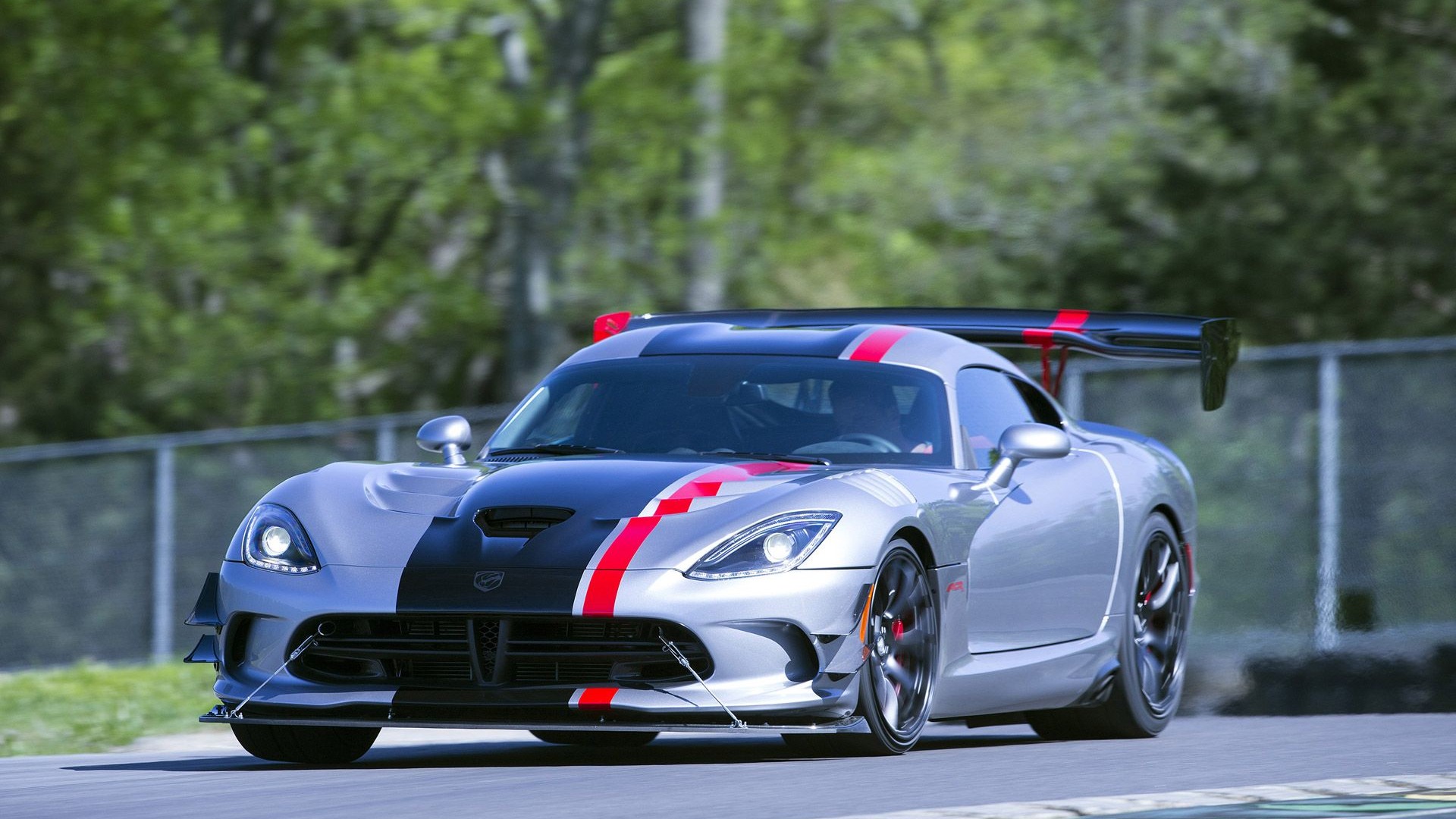
The 2016 Dodge Viper ACR holds the title of being the fastest Viper on a racetrack—at least, that’s Dodge’s official stance—but with a top speed of 177 mph, it’s also the slowest Viper in a straight line. Apart from a finned differential designed to aid cooling, the ACR’s drivetrain is identical to every other model in the Viper lineup.
That includes the same monstrous 8.4-liter V-10 engine delivering 645 horsepower and 600 lb-ft of torque—an engine that practically looks like it could double as carry-on luggage. The real reason the ACR dominates on track isn’t raw power, though—it’s downforce. And that’s also what costs it in top-end speed.
Downforce puts air to work doing something very specific: pushing the car into the pavement. The more air presses the car into the track, the better it grips and the faster it can corner. But this aerodynamic trick doesn’t come for free.
That same force pushing the car downward also increases drag, robbing it of speed at the top end. Picture a Viper with a reversed set of airplane wings mounted to the roof and you’re on the right track.
Straight from the factory, the Viper ACR comes with a massive adjustable rear wing bolted to the trunk, a pronounced front splitter that gives the car an aggressive underbite, dive planes mounted to the front bumper like a pair of aerodynamic whiskers, fender vents above the front tires to cut lift, and a rear diffuser slicing through air like a precision kitchen tool.
Step up to the ACR Extreme package, and everything gets turned up a notch: the wing, splitter, and diffuser all grow in size and effectiveness.
An incredible 2000 pounds of downforce when the car is pushing its 177-mph limit. The price? A significant hit to the drag coefficient—0.54 for the ACR Extreme, compared to 0.37 for the base Viper SRT and 0.43 for the Viper TA.
Also Read: Top 10 Worst and 10 Best Trucks for Towing
4. 2018 Porsche 911 GT2 RS Weissach Edition
Porsche has built a reputation for its meticulous engineering, and the 2018 Porsche 911 GT2 RS Weissach Edition is a prime example of this with its outstanding braking performance.
Although designed primarily for the track, it is fully street-legal and can stop from 97 kilometers per hour in an impressive 26.5 meters. The car features carbon-ceramic brakes paired with lightweight magnesium wheels, which reduce unsprung weight and improve braking efficiency.
The GT2 RS is powered by a 3.8-liter twin-turbo flat-six engine that produces 690 horsepower. However, it is not just the power that makes the GT2 RS stand out; the combination of a perfectly balanced chassis, advanced aerodynamics, and precise braking components ensures unrivaled stopping performance.
Additionally, the Weissach package, which reduces the car’s overall weight by approximately 18 kilograms, further enhances the GT2 RS’s legendary handling and braking abilities.
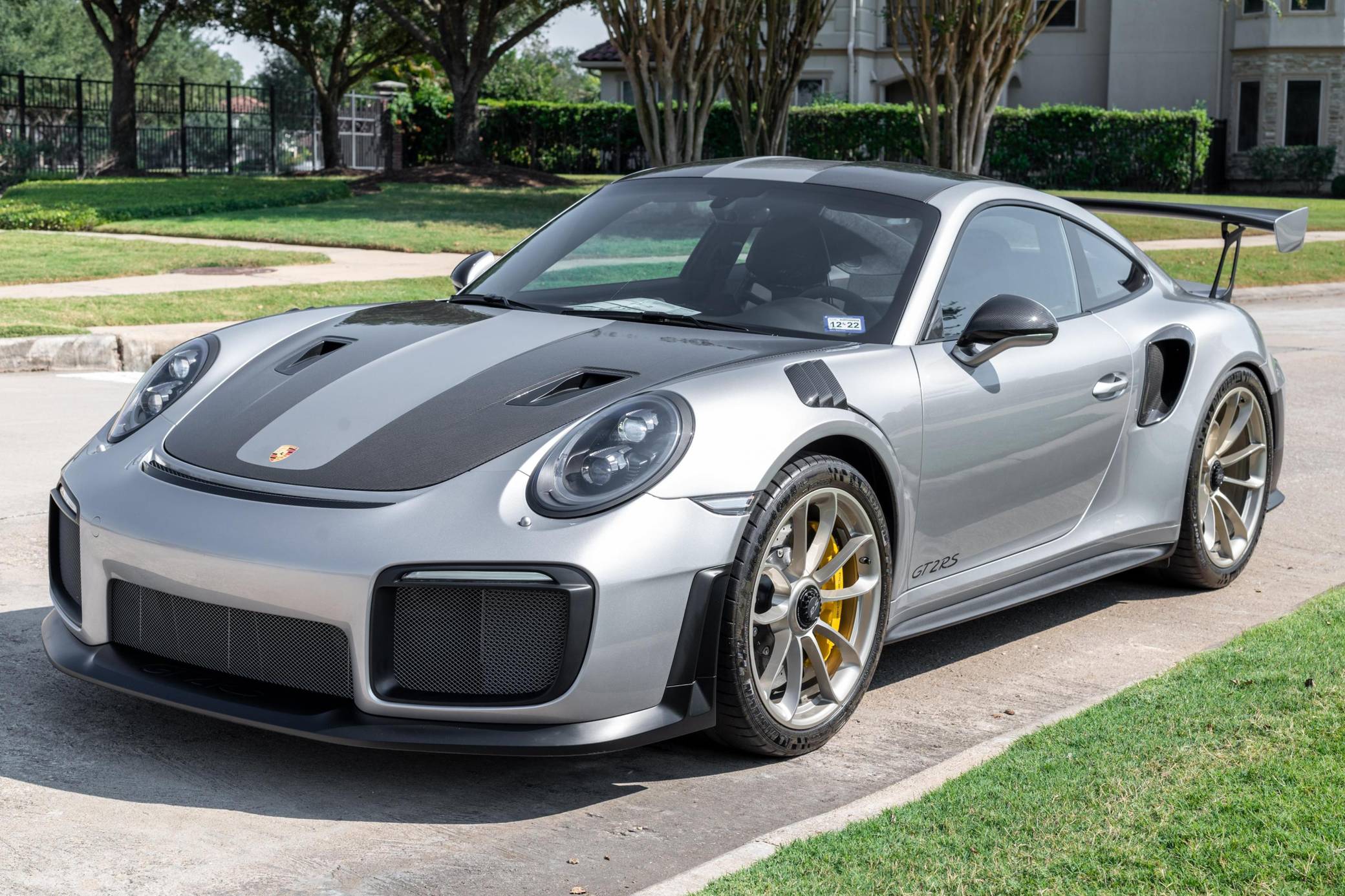
“It’s the alpha animal of the GT stable.” In just eight words, Andreas Preuninger—Porsche’s go-to guy for developing precision tools like the 911 GT3 and the aggressive Cayman GT4—perfectly captures the essence of the monstrous new 911 GT2 RS. And it only takes one full-throttle launch to understand what he means.
With the force of a Saturn V rocket, this 700-hp beast from Weissach hurls itself past 60 mph in 2.7 seconds, 124 mph in 8.3 seconds, and 186 mph in just 22.1 seconds, ultimately topping out at an electronically limited 211 mph. The verdict is clear: the GT2 RS isn’t just fast—it’s the definitive 911.
The latest GT2 RS is a captivating blend of old-school muscle and cutting-edge tech, anchored by its aggressive twin-turbocharged 3.8-liter flat-six that sits beneath a serious rear wing.
The tradition is in its formula: a high-output, turbocharged, rear-wheel-drive 911, a layout that echoes the brutal 930 from the late ’70s and builds on the fearsome legacy of the 2010 GT2 RS.
But while the spirit is classic, the execution is state-of-the-art. The 2018 GT2 RS is the ultimate showcase of everything Porsche’s top engineers at Weissach know about making a 911 faster, sharper, and more capable than ever.
Preuninger readily acknowledges that the GT2 RS’s turbocharged engine can’t match the instant throttle response of the GT3 RS’s naturally aspirated 4.0-liter flat-six.
But he’s quick to point out that this isn’t a flaw—it’s intentional: “It’s about having an old school turbo engine with a little lag, and a sound that is typically turbo.” More importantly, it’s designed to deliver a distinct type of performance, one that breaks from the GT3’s high-revving rhythm.
“In a GT3 you have to work through the gears, wait for your moment to overtake, but in the GT2 RS you just push the accelerator and go, no matter which gear you’re in.”
5. 2024 Ford Mustang Dark Horse
At the top of the list is the 2024 Ford Mustang Dark Horse, which surprises many by outshining even the lighter contenders in the industry.
With the ability to stop from 97 kilometers per hour in an astonishing 26.2 meters, the Mustang Dark Horse sets a new benchmark for braking performance.
Its six-piston Brembo front calipers, two-piece rotors, and carefully tuned suspension all contribute to its extraordinary stopping power.
Despite being the heaviest car on this list, weighing in at 1,827 kilograms, the Mustang Dark Horse achieves the ideal balance between weight distribution, advanced braking technology, and high-performance tires.
Its ability to maintain consistent stopping distances, even under high-stress conditions, showcases the dependability and strength of its braking system.
This remarkable achievement cements the Mustang Dark Horse as the ultimate braking champion, pushing the boundaries of what muscle cars are capable of.
The Mustang’s entry-level powertrain features a turbocharged 2.3-liter four-cylinder EcoBoost engine, delivering 315 horsepower and 350 pound-feet of torque, paired solely with a 10-speed automatic transmission.
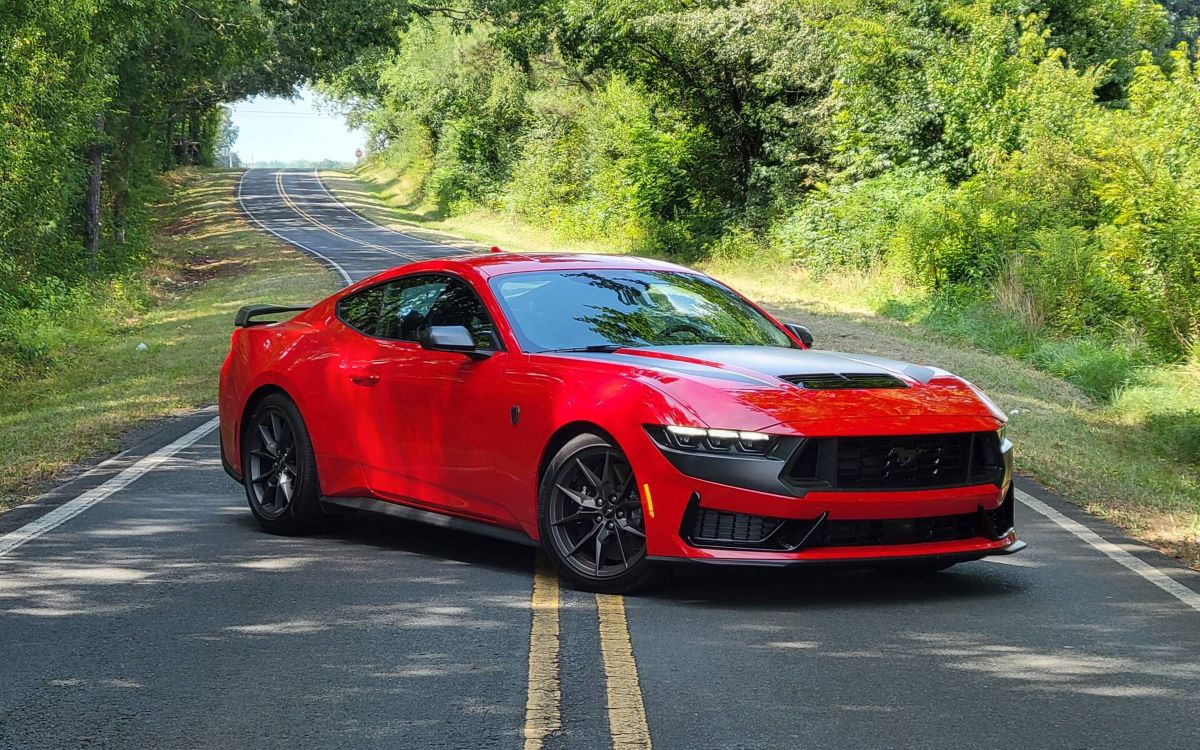
(Interestingly, that’s a slight dip compared to the previous-gen EcoBoost Performance, which produced 330 horsepower.) While this setup performs respectably, the real soul of the Mustang lies in its 5.0-liter V-8.
With a standard output of 480 horsepower and 415 pound-feet of torque, this engine can be mated to either the 10-speed auto or, ideally, a six-speed manual transmission. Ford also notes that an optional performance exhaust bumps those figures up to 486 horsepower and 418 pound-feet.
The Mustang Dark Horse is a more track-focused evolution of the GT, featuring a specially tuned, 500-horsepower variant of the 5.0-liter V-8. In many ways, it picks up where the previous generation’s Mach 1 left off. It comes equipped with adaptive dampers and rides on 19-inch Pirelli P Zero PZ4 tires.
For those wanting maximum grip, Pirelli Trofeo RS track tires are available via an optional handling package. Over the years, Ford has steadily improved the Mustang’s balance of ride quality and handling precision, and this latest generation continues that trend.
The upgrades include sharper steering feel and better feedback across the board. The Dark Horse’s standard adaptive suspension plays a major role in managing the harshness that often comes with the territory when a performance car rolls on hardcore track rubber.
Cars That Struggle to Stop
Below are the vehicles that recorded the worst average braking times in 2019, based on our standardized test of ten emergency stops from 100 km/h (62 mph). In the case of a tie, the best single stopping time achieved by the vehicle is used to determine the ranking.
5. Mercedes-Benz X250d 4Matic: 3.42 seconds
The Mercedes-Benz X250d, which we featured in the May 2018 issue, was equipped with 320 mm ventilated discs up front and 308 mm at the rear. It came shod with 255/60 R18 Continental Cross Contact X2 tires.
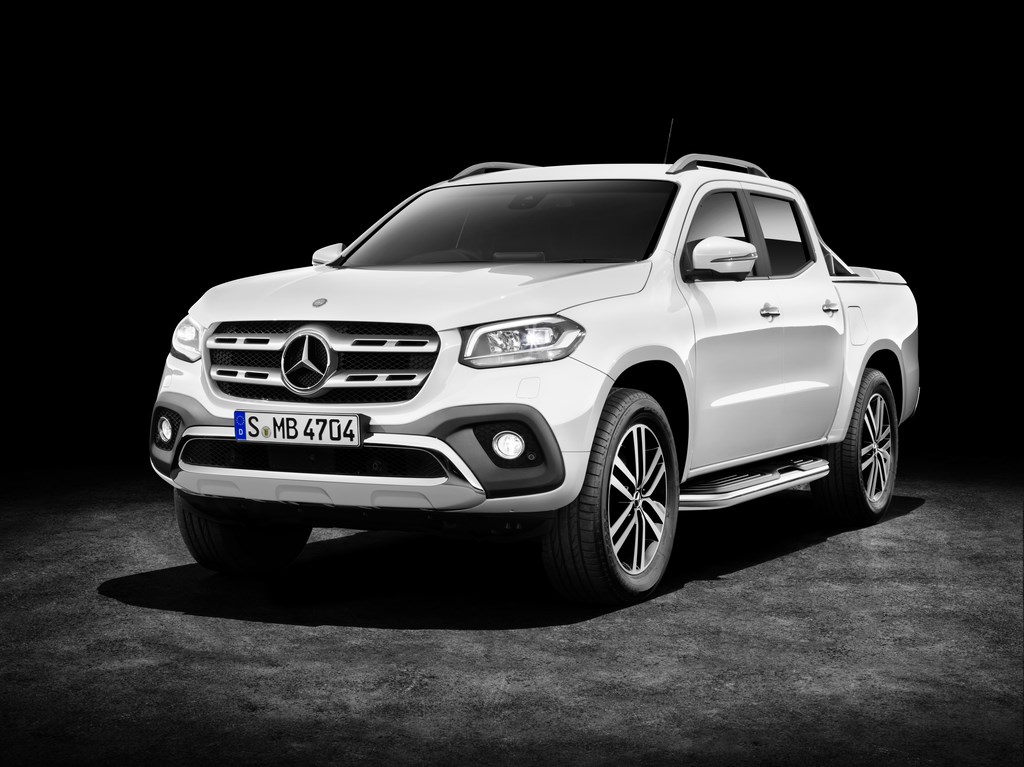
This setup enabled the X250d to post an average stopping time from 100–0 km/h of 3.42 seconds, with a best individual stop of 3.04 seconds—enough to earn fifth place on this list.
The question remains, however: how will the range-topping X350d perform when subjected to our rigorous braking test? You’ll find the answer in the March 2019 issue.
4. Haval H9 2.0T 4WD Luxury: 3.42 seconds
The Haval H9 is the most expensive Chinese vehicle we’ve tested so far, and it comes generously equipped with standard features—including safety tech such as ABS, electronic brake assist (EBA), and electronic brake distribution (EBD).
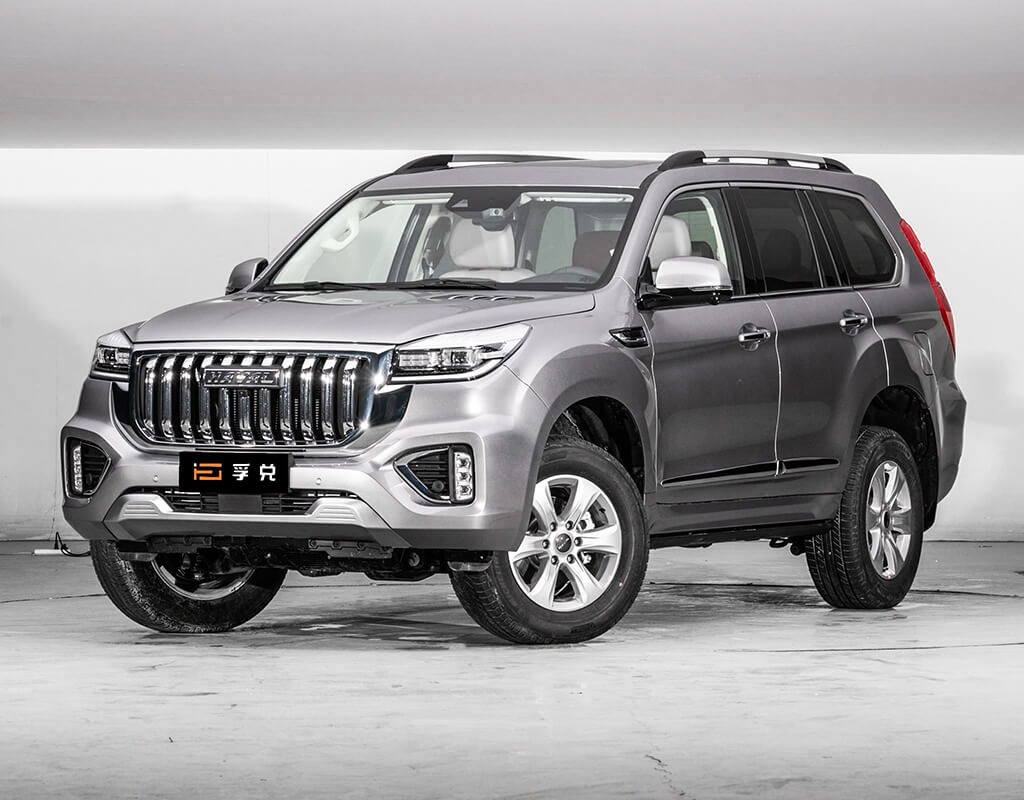
Despite its comprehensive safety package, the H9 weighs in at a hefty 2,391 kg and uses 330 mm ventilated discs at all four corners. Still, it ended up on this list with an average braking time of 3.42 seconds. Its best individual stop of 3.23 seconds wasn’t enough to outperform the Mercedes X250d.
3. Nissan Micra Active 1.2 Visia: 3.44 seconds
It might come as a surprise to see a small and relatively lightweight vehicle like the Nissan Micra Active appear on a list of slowest-stopping cars. Finishing in third place, this quirky little hatch runs on 14-inch black alloy wheels wrapped in Falken Sincera tires.
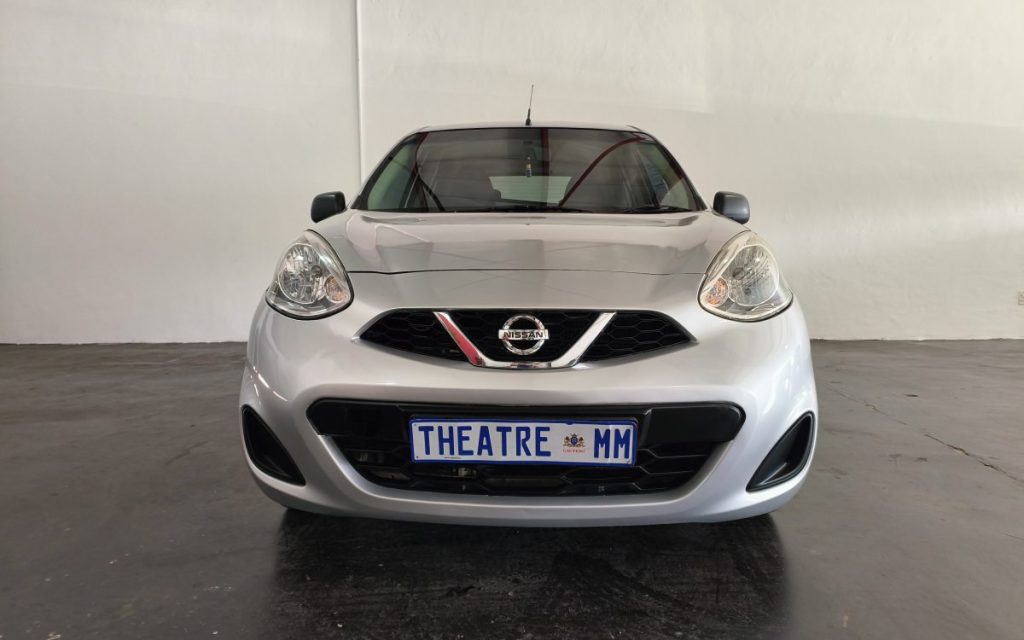
It’s equipped with ventilated discs up front and drum brakes in the rear. Despite its size, the Micra Active recorded an average emergency braking time of 3.44 seconds.
2. Roush Ranger RS3 Double Cab AT: 3.55 seconds
Roush’s take on the Ford Ranger upgrades the standard 3.2-litre five-cylinder engine from 147 kW and 470 N.m of torque to a formidable 190 kW and 650 N.m—performance figures that rival the Mercedes X350d. However, while it sounds promising on paper, the Roush doesn’t quite match the polish of the base vehicle.
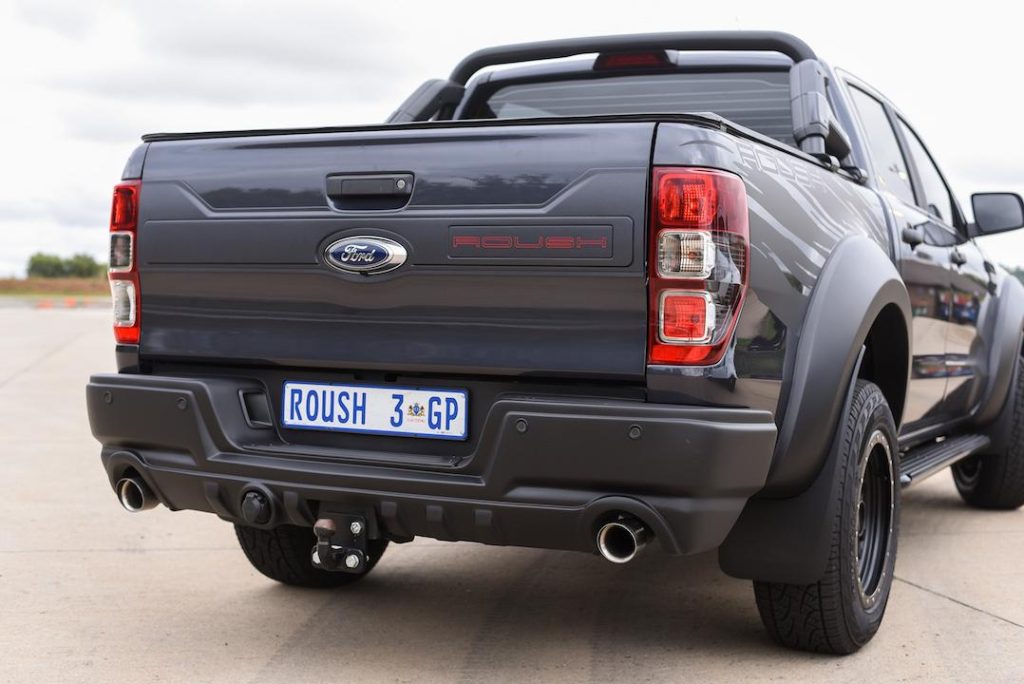
When compared to the stock Ranger Wildtrak—which we tested in 2016 and clocked an average braking time of 3.20 seconds—the Roush variant fared worse, coming in at 3.55 seconds. It uses the same braking hardware as the Wildtrak: 302 mm ventilated front discs and 295 mm rear drums, paired with Pirelli Scorpion APR tires.
1. BAIC X25 1.5 MT Fashion: 3.81 seconds
Our review of the BAIC X25 concluded that this small, well-equipped crossover had some promise. However, its positives were overshadowed by issues such as poor braking performance and high NVH levels.
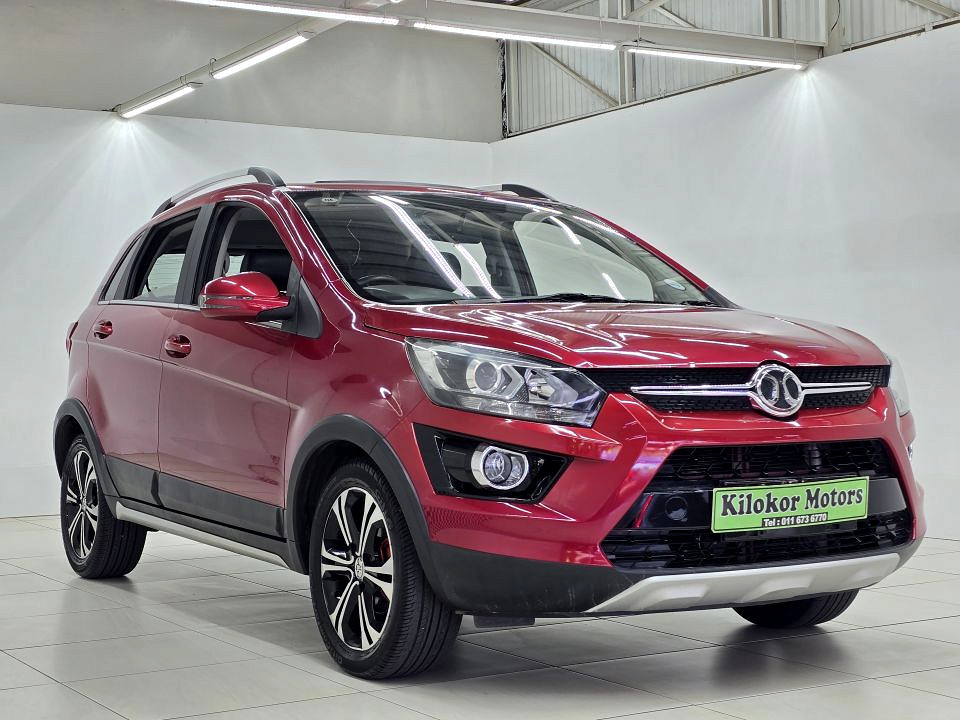
Despite the inclusion of safety aids like ABS and EBD, the X25’s braking hardware—256 mm ventilated discs up front and 259 mm solid discs at the rear—struggled to bring its 16-inch wheels to a stop. The result was an average braking time of 3.81 seconds, the slowest of any vehicle we tested that year.

